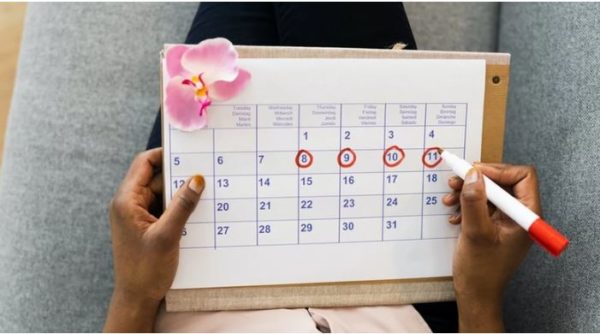In today’s technology-driven world, it’s easy to think that period-tracking apps have all the answers.
These apps make keeping track of your period sound super simple – input the requested data, and voila, it’s all tracked for you.
But here’s the catch: you can’t always count on these apps to be right. Sometimes, they make predictions that turn out to be wrong. Imagine the app tells you a specific day, but your period surprises you by showing up a bit earlier.
What’s worse? There’s the risk of losing all your app’s recorded data, and you’ll have to start from scratch. So, relying solely on these apps might not be your best bet.
It’s understandable that many women are unfamiliar with the manual process of tracking their periods as using a pen and calendar has been considered old-fashioned.
But if you’re curious and wish to take charge of understanding your period without depending on apps, we’ll walk you through everything you need to know in this detailed guide.
From explaining what a monthly cycle is, all the way to showing you how to track it without depending on those digital apps.
Understanding the monthly cycle: What is it?
Let’s start with the basics. The monthly cycle, also known as the menstrual cycle, is a natural process that occurs in women, typically starting during their teenage years. It involves various hormonal changes and prepares the body for the possibility of pregnancy.
The monthly cycle usually begins around the age of 9 to 16 years, with the average age being around 12. However, everyone is unique, and the age at which it starts can vary. When the monthly cycle begins, it’s a sign that the body is maturing and becoming capable of reproduction.
Phases of the monthly cycle
The monthly cycle consists of four primary phases: menstruation, the follicular phase, ovulation, and the luteal phase.
- Menstruation: This is when you experience your period. It typically lasts for about 3 to 7 days depending on the individual and involves the shedding of the uterine lining. Blood flows during this time.
- Follicular phase: This phase begins right after menstruation and lasts around 7 to 21 days. Hormones like estrogen rise, leading to the thickening of the uterine lining in preparation for a potential pregnancy.
- Ovulation: Around the middle of your cycle, usually around day 14 in a 28-day cycle, an egg is released from the ovary. This is the most fertile phase and the time when pregnancy is most likely if unprotected sex occurs.
- Luteal phase: After ovulation, the body enters the luteal phase, which lasts around 10 to 16 days. If pregnancy doesn’t occur, hormone levels decrease, leading to the shedding of the uterine lining and the start of a new menstrual cycle.
Why track your monthly cycle?
Tracking your monthly cycle can provide valuable insights into your health and body. It can help you anticipate your period and prepare in advance, monitor changes in mood and energy levels, and even detect potential health issues. Also, if you’re trying to conceive or avoid pregnancy, understanding your cycle can be immensely helpful.
How to track without apps:
Here’s how to track your period manually using simple methods:
- The calendar method: Keep a calendar or diary where you mark the first day of your period as “Day 1.” Count the days until your next period starts. This will give you an estimate of the length of your cycle.
- Observe physical changes in your body: Pay attention to your body’s signals. You may notice changes in cervical mucus, which becomes clearer and more stretchy during ovulation, fuller breasts, and cramps.
- Tracking symptoms: Note any physical or emotional symptoms you experience throughout your cycle. This could include changes in energy, mood, and appetite.
- Period products: Keep track of how many tampons, pads, or menstrual cups you use each day. This can help you gauge the flow of your period and detect any abnormalities.
- Create a working tracking system: To create an effective tracking system, follow these steps:
- Mark the start and end dates of each period on your calendar.
- Calculate your cycle length by subtracting the start date of your previous period from the start date of your current period to calculate the length of your cycle.
- Based on your cycle length, you can estimate when ovulation is likely to occur. This is usually around the middle of your cycle.
- You may choose to document any symptoms or changes you experience like mood swings, bloating, or cravings around this time.
What are the benefits of manual tracking?
Apps offer convenience but manual tracking has its benefits:
- Manual tracking encourages you to be more in tune with your body’s natural rhythms.
- You won’t rely on apps that could potentially fail or lose data.
- Manual tracking is cost-free and only requires basic supplies like a calendar and pen.
Make sure to see a Doctor if you experience very irregular cycles, intense pain during your period that affects your daily activities or abnormal symptoms like unusual changes in bleeding patterns, odour, or discharge.


